Introduction to Perturbative Quantum Field Theory
Show Complete Series
Part 1: Higher Prequantum Geometry I: The Need for Prequantum Geometry
Part 2: Higher Prequantum Geometry II: The Principle of Extremal Action – Comonadically
Part 3: Higher Prequantum Geometry III: The Global Action Functional — Cohomologically
Part 4: Higher Prequantum Geometry IV: The Covariant Phase Space – Transgressively
Part 5: Higher Prequantum Geometry V: The Local Observables – Lie Theoretically
Part 6: Examples of Prequantum Field Theories I: Gauge Fields
Part 7: Examples of Prequantum Field Theories II: Higher Gauge Fields
Part 8: Examples of Prequantum Field Theories III: Chern-Simons-type Theories
Part 9: Examples of Prequantum Field Theories IV: Wess-Zumino-Witten-type Theories
Part 10: Introduction to Perturbative Quantum Field Theory
Next: Mathematical Quantum Field Theory
This is the beginning of a series that gives an introduction to perturbative quantum field theory (pQFT) on Lorentzian spacetime backgrounds in its rigorous formulation as locally covariant perturbative algebraic quantum field theory.
This includes the theories of quantum electrodynamics (QED) and electroweak dynamics, quantum chromodynamics (QCD), and perturbative quantum gravity (pQG) — hence the standard model of particle physics — on Minkowski spacetime (for particle accelerator experiments) and on cosmological spacetimes (for the cosmic microwave background) and on black-hole spacetimes (for black hole radiation).
This first part introduces the broad idea and provides a commented list of references. The next part will start with a general discussion of a pivotal part of the theory: the “S-matrix” in causal perturbation theory, see below for a quick idea.
Table of Contents
Perturbation and Non-perturbation
Often “perturbative quantum field theory” (pQFT) is referred to simply as “quantum field theory” (QFT). However, it is worthwhile to make the distinction explicit.
The word “perturbative” means that both the interactions between the fields/particles as well as the quantum effects they exhibit are assumed to be tiny — in fact infinitesimal — perturbations of the free (non-interacting) classical fields, hence of the undisturbed (matter-)waves freely propagating through the universe, with well-defined amplitudes at each spacetime point. More precisely this means that the observables of the theory (i.e. the numerical predictions that it makes about phenomena seen in the experiment) are not true functions of the coupling constant ##g## (indicating the strength of the interaction) and of Planck’s constant ##\hbar## (indicating the strength of quantum effects), but just non-converging formal power series, at best “asymptotic series”.
This sounds like a drastically coarse approximation to the actual interacting and quantum world that we inhabit — and indeed it is. However, a remarkable mathematical fact is that this drastically coarse approximation is already extremely rich in phenomena and demanding in mathematical techniques; and a remarkable experimental fact about the observable universe is that this extremely coarse approximation suffices to explain/predict essentially all phenomena that are seen in high energy particle scattering experiments, and to high numerical precision. Hence while on the one hand pQFT is a dramatic triumph of pure thought over reality, on the other hand, it amplifies the vastness of the presently unknown reality that must still lie beyond our present understanding: In a mathematically precise sense, pQFT describes only the infinitesimal neighborhood of the space of classical and free field theories inside the full space of quantum field theories.
Indeed some extremely basic aspects of observed physical reality are invisible to pQFT: Notably, the curious phenomenon of QCD called asymptotic freedom means that it completely fails to describe the bound nature of the hadronic matter that all the world around us it made of (the confinement of quarks); it only applies well for high energy scattering processes seen in particle accelerators. This is believed to be related to the special non-perturbative nature of the QCD vacuum known as the instanton sea, to which we briefly turn below at the very end.
Hence we will eventually need to understand non-perturbative quantum field theory. This is by and large a wide-open problem, both conceptually and physically. Presently not a single example of an interacting non-perturbative Lagrangian quantum field theory has been constructed in spacetime dimension ##\geq 4## (besides numerical simulation, such as lattice gauge theory). For the case of 4d Yang-Mills theory (such as QED and QCD) one single aspect of its non-perturbative quantization (the expected “mass gap”) is among the list of “Millenium Problems” listed by the Clay Mathematics Institute. Full non-perturbative Yang-Mills theory might well be a ##10^4## year problem, and full non-perturbative quantum gravity might be a ##10^5## year problem. But every journey needs to start with a first step in the right direction, and therefore a conceptually clean understanding of pQFT theory should be a helpful stepping stone towards these big open problems.
Unfortunately, even pQFT has been notorious for being believed to be conceptually mysterious. Modern textbooks will still talk about “divergencies that plague the theory” and, worse, appeal to the folklore of the “path integral” without offering precise clues as to its nature, thereby disconnecting the theory from the mathematically informed discourse that distinguishes modern physics from the “natural philosophy” of the ages before Newton. This is a historical remnant of the early days of the theory as conceived by Tomonaga, Schwinger, Feynman, and Dyson, when many steps still proceeded by educated guesswork
Causal Perturbation Theory
However, a mathematically rigorous formulation of pQFT on Minkowski spacetime (describing processes seen in particle accelerators such as the LHC experiment) with precise well-defined concepts had been fully established already by 1975, as summarized in the seminal Erice summer school proceedings of Velo-Wightman 76. Among other contributions, this included the formalization of the theory due to
- Henri Epstein, Vladimir Glaser,
“The Role of locality in perturbation theory”,
Annales Poincaré Phys. Theor. A 19 (1973) 211 (Numdam)
which has come to be known as causal perturbation theory.
The key idea of this approach is to define the perturbative scattering matrix of the pQFT by imposing (i.e. axiomatizing) how it should behave — in particular how it should behave with respect to spacetime causality, whence the name — instead of trying to define it by a path integral.
The scattering matrix of a pQFT is the collection of all probability amplitudes for a given set of field quanta (particles) coming in from the far past, then perturbatively interacting with each other and hence scattering off each other, to finally emerge in the far future as another set of field quanta. The corresponding scattering probabilities (“scattering cross-sections”) are manifestly the kind of information that may be measured in the detector of a particle accelerator, where to good approximation the incoming beams are the particles “from the far past” and the hits on the detectors around the point where the beams collide is the particles emerging “in the far future”. The theory has to make predictions for which of the many detector cells (at which angles from the colliding beams) is going to be triggered with which ratio gave the incoming particle beam, and this is all encoded in the scattering matrix.
In traditional approaches of pQFT, the scattering matrix is written schematically as
$$
S(L_{\text{int}} )
\overset{\text{not really}}{=}
\int \left[D\phi\right] e^{ \tfrac{1}{i \hbar} \int_X L_{\text{free}}(\phi) } \, \exp\left( \tfrac{g}{i \hbar} \int_X\left( L_{\text{int}}(\phi) \right) \right)
$$
where the informal schematic right-hand side expresses the idea that the probability amplitude for a scattering process is a sum (integral) over all spacetime field configurations ##\phi## (with the given asymptotic behavior) of the complex phase determined by the free Lagrangian density ##L_{\text{free}}## and the interaction Lagrangian density ##L_{\text{int}}## evaluated at that field configuration and integrated over spacetime ##X##.
There is no known way to make sense of this integral, apart from toy examples. The reason that traditional pQFT textbooks nevertheless make some sense is that all that is really being used are some structural properties that such a would-be integral should have. To make such reasoning precise, one is to give up on the idée fixe of actual path integration and simply state exactly which properties the expression ##S(L_{\text{int}})## is actually meant to have!
The key such property of the S-matrix is “causal additivity”. This essentially just says that all effects caused in some spacetime region must be in the causal future (and past) of that region.
The main result of causal perturbation theory is the proof that
- Causally additive perturbative S-matrices exist, hence pQFT exists, rigorously;
- at each order there is a finite-dimensional space of choices, the renormalization freedom;
- any two such choices are related by a unique re-definition of the Lagrangian densities (by “counter-terms”);
- these re-definitions form a group, the Stückelberg-Peterson renormalization group.
This is known as the main theorem of perturbative renormalization, and we will discuss this in detail later in this series.
A textbook account of QED in causal perturbation theory is
- Günter Scharf,
“Finite Quantum Electrodynamics – The Causal Approach”,
Springer 1995
and electroweak theory, QCD as well as pQG are discussed this way in
- Günter Scharf,
“Quantum Gauge Theories — A True Ghost Story”,
Wiley 2001
Perturbative Algebraic Quantum Field Theory
A key technical tool that allows pQFT in causal perturbation theory to be well-defined is that the interactions of the fields are considered “smoothly switched off outside a compact spacetime region” (called “adiabatic switching”).
Originally this was considered just an intermediate technical step to separate the issue of “UV-divergences” (the definition of the S-matrix at coinciding interaction points) from the “IR-divergences”, namely from the issue of taking the “adiabatic limit” of the S-matrix in which the adiabatic switching is removed and interactions are considered over all of spacetime.
But it had been observed already in Il’in-Slavnov 78 that for realistic quantum observables which are supported in a compact region of spacetime (corresponding to an experimental setup of finite extension in space and time) all that matters is that the interaction is “switched on” in the causal closure of the support of the observable, while outside its support it may be “adiabatically switched off” at will without actually changing the value of the observables (up to canonical unitary equivalence, see here). Moreover, the system of spacetime localized perturbative quantum observables obtained this way from the causal S-matrix turns out to satisfy axioms that had earlier been proposed in Haag-Kastler 64 to provide a complete mathematical characterization of the physical content of a pQFT: they form a local net of observables. This will be explained in detail in the next part of this series.
Haag-Kastler originally aimed, ambitiously, for the axiomatization of the non-perturbative quantum field theory, and hence required the algebras of observables in the local net to be ##C^\ast##-algebras. Their formulation of non-perturbative quantum field theory via local nets of ##C^\ast##-algebras came to be known as algebraic quantum field theory (AQFT). Here in perturbation theory, these algebras are just formal power series algebras (in the coupling constant and in Plancks’s constant), but otherwise, they satisfy the original Haag-Kastler axioms. This way pQFT in the rigorous guise of causal perturbation theory came to be called perturbative algebraic quantum field theory (pAQFT, Brunetti-Dütsch-Fredenhagen 09).
The terminology overlaps a bit. It may be useful to think of it as follows:
- causal perturbation theory elegantly deals with the would-be “UV-divergencies” in pQFT by the simple axiom of the causal additivity S-matrix;
- perturbative AQFT in addition elegantly deals with the “decoupling of the IR-divergences” in pQFT by organizing the system of spacetime localized quantum observables into a local net of observables and thereby proving that the adiabatically switched S-matrix yields correct physical localized observables even without taking the problematic adiabatic limit (i.e. even without defining the theory in the infrared).
Locally covariant pAQFT
While there are other equivalent rigorous formulations of pQFT on Minkowski spacetime, causal perturbation theory is singled out as being the one that generalizes well to QFT on curved spacetimes (Brunetti-Fredenhagen 99), hence to quantum field theory in the presence of a background field of gravity. This is important: For example, pQFT on cosmological spacetime backgrounds describes the processes whose remnant is seen in the cosmic microwave background, while pQFT on black hole spacetime backgrounds describes black hole radiation.
One reason this works so well is that the axiom of causal additivity, which essentially defines the perturbative S-matrix, manifestly makes sense on general time-oriented spacetimes. But moreover, there is some hard analysis that guarantees that the construction proof of the perturbative S-matrix does generalize from Minkowski spacetime to general time-oriented globally hyperbolic spacetimes: This requires finding
- generalizations of the Minkowski vacuum state to curved spacetimes to define the free quantum field theory via its Wick algebra (the “normal-ordered product”);
- corresponding Feynman propagators on curved spacetimes to define the perturbative interacting field theory via its time-ordered product.
This is non-trivial because on general (even globally hyperbolic) spacetimes there exists no vacuum state since there does not even exist a global concept of particles. But it turns out that time-ordered globally hyperbolic spacetimes do admit quantum states that, while not being vacuum states in general, do satisfy all the properties that are needed for the definition of free field quantization, these are known as the Hadamard states, essentially unique up to the addition of a regular term (Radzikowski 96). Moreover, each Hadamard state induces a corresponding Feynman propagator on the curved spacetime. With this in hand, the construction of the pQFT on curved spacetime may be obtained closely following the causal perturbation theory on Minkowski spacetime (Brunetti-Fredenhagen 00).
This then allows to generalize causal perturbation theory to construct pQFTs “general covariantly” on all time-oriented globally hyperbolic spacetimes, it has come to be called locally covariant algebraic quantum field theory (lcpAQFT).
The traditional toolbox made rigorously
Eventually, all the traditional lore and tools of pQFT have been (re-)obtained in the precise form in the context of pAQFT. For instance:
- the Feynman perturbation series of the S-matrix in terms of Feynman diagrams and their dimensional regularization (Keller 10, Dütsch-Fredenhagen-Keller-Rejzner 14);
- the gauge fixed quantization of gauge theories via BRST-BV formalism (Fredenhagen-Rejzner 11, Rejzner 16);
- cosmological perturbation theory (Brunetti-Fredenhagen-Hack-Pinamonto-Rejzner 16)
A fairly comprehensive review of the theory as of 2016, with pointers to the research literature for further details, is in
- Katarzyna Rejzner,
“Perturbative Algebraic Quantum Field Theory“,
Springer 2016
In this series, I will broadly follow this view of the subject, spelling out some more details here and there and maybe omitting other details at other places. I have a plan to follow but will be happy to try to react to requests, comments, and criticism from the PF-Insights readership.
From first principles
Besides the conceptual precision of our physical theories, we also want them to be conceptually coherent, preferably to follow from a small set of joint principles. While causal perturbation theory / perturbative AQFT is a mathematically precise formulation of traditional pQFT, many of its constructions appear somewhat ad hoc, even though well-motivated and certainly right.
For instance, the causal additivity axiom on the perturbative S-matrix was originally introduced as a really clever guess concerning the generalization to higher dimensional Lorentzian spacetimes of the simple 1-dimensional “path-ordering” in the Dyson formula (known as iterated integrals to mathematicians), and the construction of the interacting quantum observables from the S-matrix by Bogoliubov’s formula was mainly motivated from the fact that Bogoliubov gave that formula.
Of course, this being physics, all these constructions are physically justified by the fact that they do yield a precise formulation of traditional pQFT, and that traditional pQFT receives excellent confirmation in scattering experiments.
But even better than fitting our physical theory to observation in nature would be if we could derive the physical theory from deeper first theoretical principles, and then still match it with nature.
Here we should ask (at least): What does it mean to quantize any classical theory? And is pQFT the result of applying a general quantization prescription to classical field theory?
For ages, people have chanted “The path integral does it!” in reply to this question. But as a matter of fact, it does not — it does not even exist.
There are two general quantization prescriptions that do exist as mathematically well-defined concepts: geometric quantization and algebraic deformation quantization. Remarkably, it turns out that pAQFT does follow as a special case of “formal” (perturbative) algebraic deformation quantization (specifically Fedosov deformation quantization), and maybe yet more remarkable is that this was figured out only last year:
- Giovanni Collini,
“Fedosov Quantization and Perturbative Quantum Field Theory”
(arXiv:1603.09626) - Eli Hawkins, Kasia Rejzner,
“The Star Product in Interacting Quantum Field Theory”
(arXiv:1612.09157)
This may give some hints concerning the non-perturbative completion of the theory: A good concept of non-perturbative algebraic deformation quantization exists called strict ##C^\ast##-algebraic deformation quantization.
Therefore it is suggestive that strict algebraic deformation quantization may be the right conceptual approach for attacking the non-perturbative quantization of Yang-Mills theory, as opposed, possibly, to the “constructive field theory” approach (which is trying to construct a rigorous measure for the Wick rotated path integral) that is considered in the problem description by Jaffe-Witten.
The unknown theory
This shows that despite the more than 40 years since Velo-Wightman 76, we may still be pretty much at the beginning of understanding the true conceptual nature of pQFT. There are various further hints that this is the case:
The available techniques for quantizing gauge theory in pQFT disregard the global topological sectors of the gauge field (instantons, argued to be crucial for the true vacuum of QCD). It follows on general grounds (Schreiber 14, Schenkel 14) that if these are to be included, then the space of local quantum observables can no longer be an ordinary algebra, but must become a “homotopical algebra” of sorts (“higher structure”). The principles of such “homotopical AQFT” are being explored (Benini-Schenkel 16, Benini-Schenkel-Schreiber 17), for review see Schenkel 17, but much remains to be done here.
Given that gauge theory and their instanton sectors are not some fringe topic in pQFT, but concern the core of the key application, the standard model of particle physics, much of the development of the theory may still lie ahead. And this is the only pQFT. When this is finally really understood, mankind needs to look into non-perturbative QFT. Given the wealth of mathematical subtleties involved, this will only work with a conceptually clean rigorous formulation of the theory at hand. The following articles in this series will be an introduction to the clean rigorous formulation of pQFT, as far as understood so far, in the guise of locally covariant perturbative AQFT.
This series on QFT continues here:
A first idea of Quantum Field Theory.
I am a researcher in the department Algebra, Geometry and Mathematical Physics of the Institute of Mathematics at the Czech Academy of the Sciences (CAS) in Prague.
Presently I am on leave at the Max Planck Institute for Mathematics in Bonn.

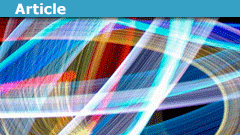
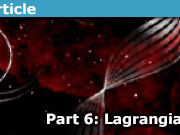
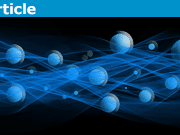
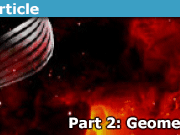
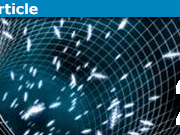
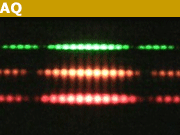
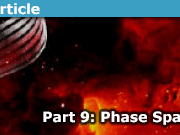
Leave a Reply
Want to join the discussion?Feel free to contribute!